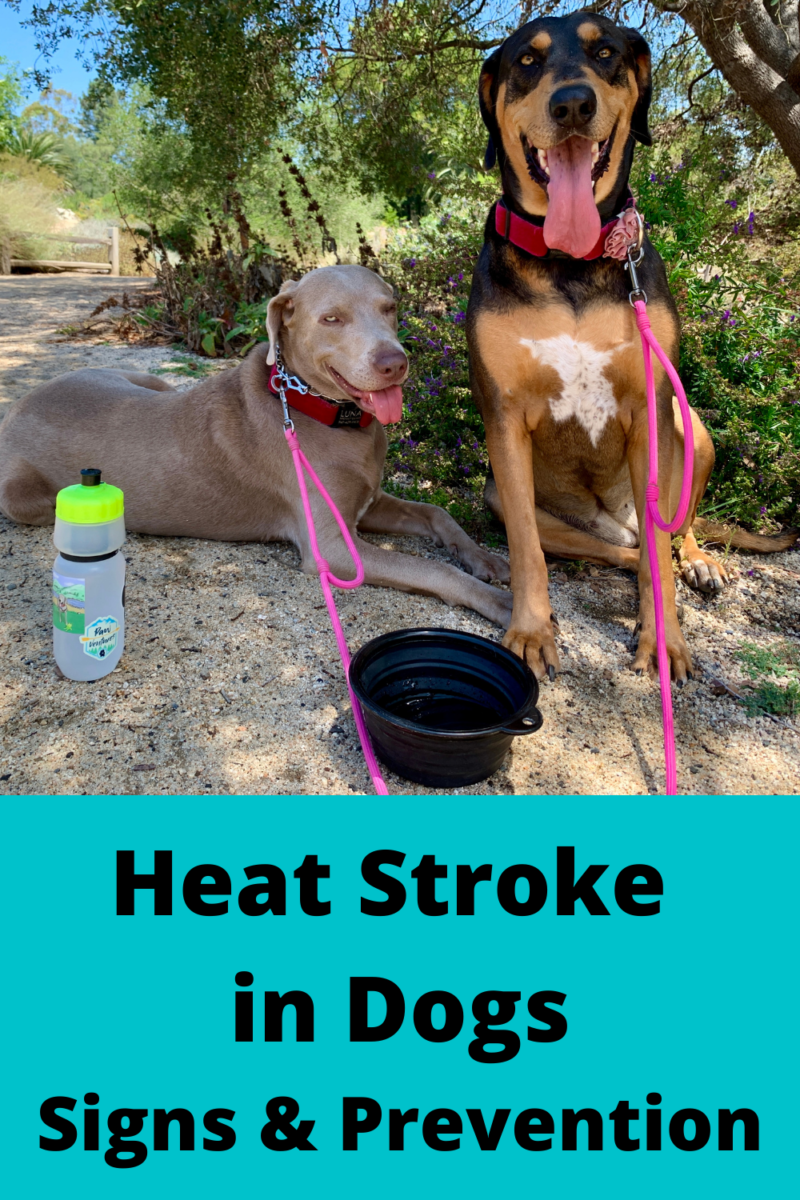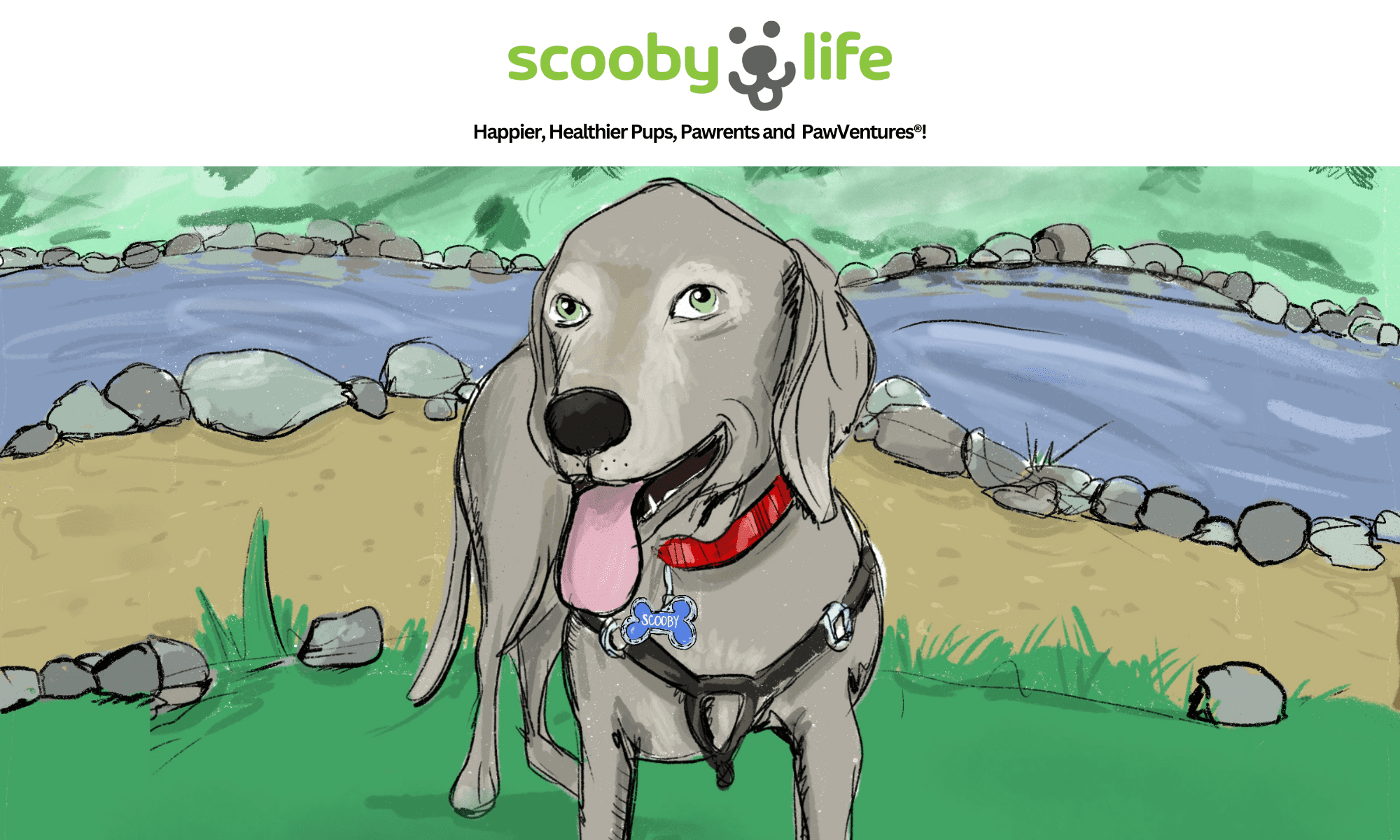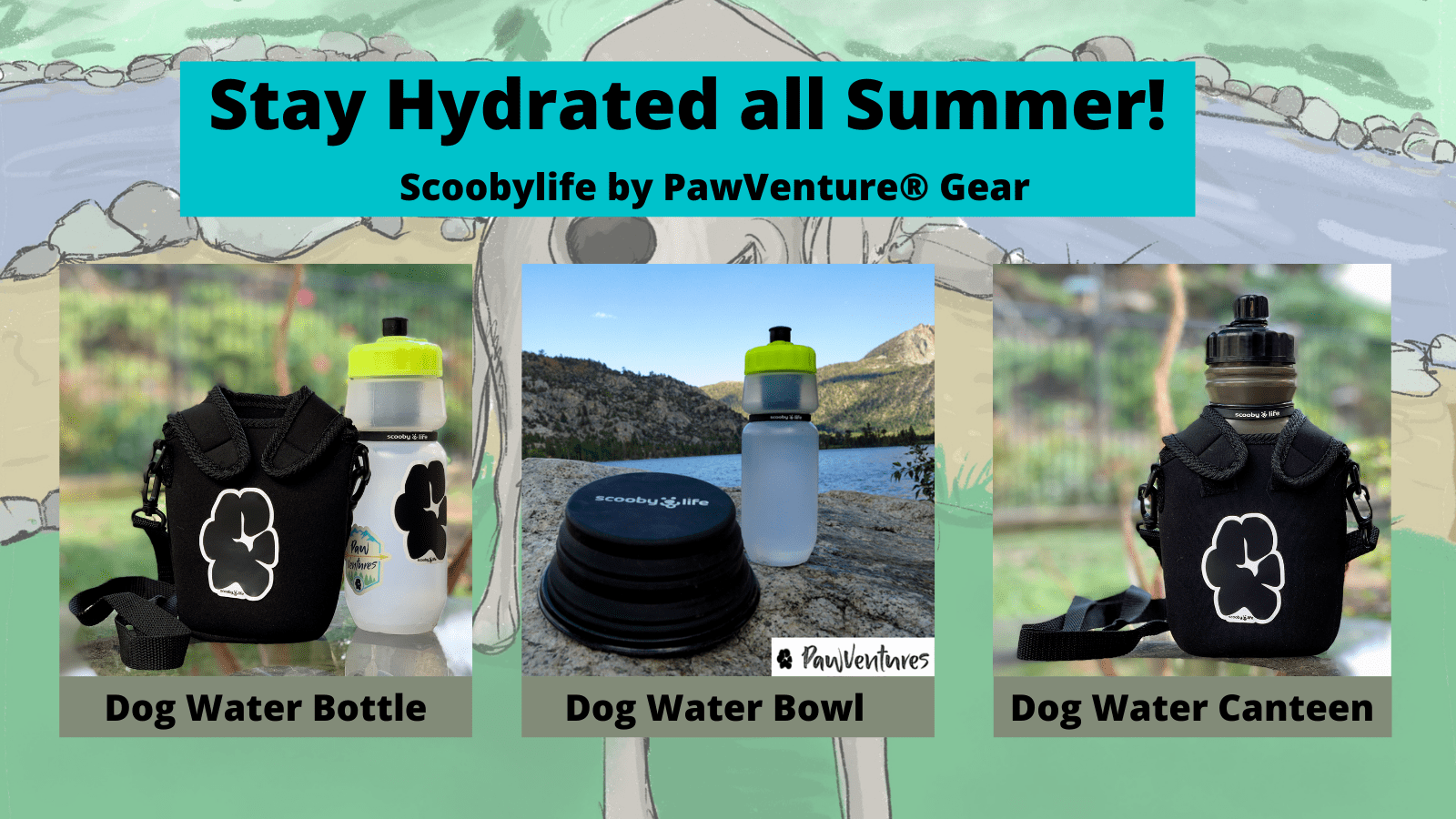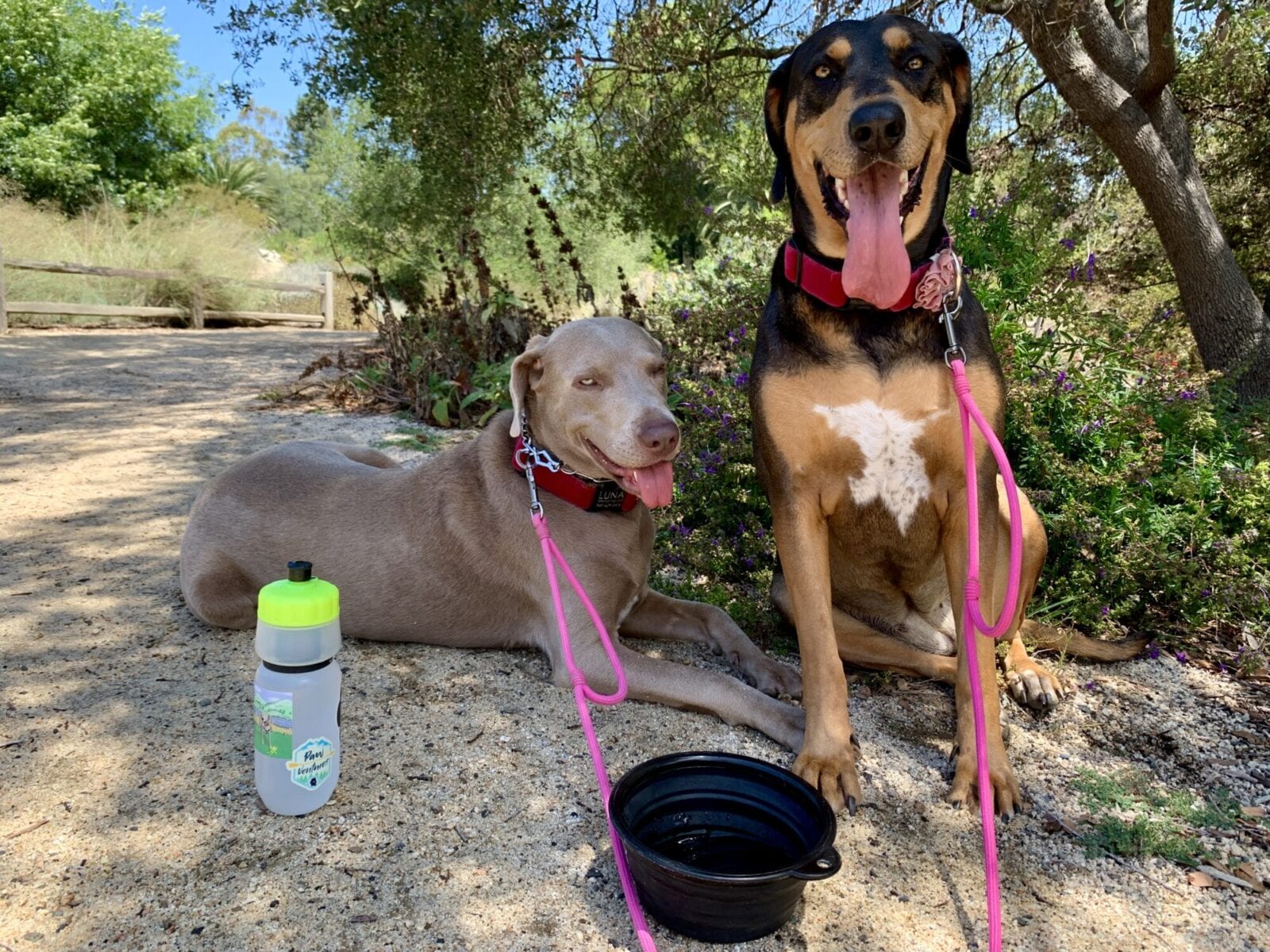
It’s Summer and that means long, sunny days for you and your Pup to PawVenture! But even the most beautiful sunny day can quickly turn into a hot, miserable and even dangerous time for your faithful companion if you don’t prepare properly. theScoobylife wants you and your pup to have the BEST Summer days! So, how can you prevent Heat Stroke in Dogs?
Is Your Dog or Pet Prone to Overheating?
While all dogs and pets are at risk for overheating, some pets have special risk considerations making them more prone to heat stroke than others. This includes:
- Brachycephalic Breeds – those with short noses and flat faces, such as Pugs, Shih Tzus, Boxers, Bulldogs, Japanese Chin, Pekingese and Persian cats (to name a few) because they cannot pant as effectively.
- Overweight Dogs
- Dogs with Thick Coats or Long Hair
- Very Young Dogs
- Senior Dogs
- Dogs with Medical Issues such as Heart or Lung Diseases
These pets should be kept cool in air-conditioned rooms as much as possible during hot days.
Tips to Prevent Heat Stroke in Dogs
- Plan your dog walks according to the weather! Check online or use your FAV weather app! Plan your walks daily a 1-2 hours before it gets warm and for later evening. Don’t go out during peak temperature hours.
- Walk in shaded areas during the day
- Occasionally sprinkle water on your dog during walk if it’s warm
- Practice Commands or play enrichment games inside where it’s cooler.
- Check the asphalt or sidewalk: If it’s too hot for your hand or bare feet it’s too hot for your dog’s paw pads which can burn. You may also consider booties to insulate their toes.
- Don’t let your dog linger on asphalt or sidewalks on warm days – move to the grass or dirt. Your dog’s body is much closer to the ground than yours and they can heat up quickly
- Have cool, fresh water available and stop frequently in shady areas during outdoor exercise and playtime.
- Make sure your dog doesn’t stay outside too long at home
- Keep your house cool (ac and fans)
- Board your dog during your summer vacation
- Offer access to a shaded (put up a tarp if necessary) wading pool with shallow, cool water. NEVER leave your dog unattended near an actual swimming pool.
- NEVER leave your dog and pets in a car if it’s over 70 degrees outside – even if the windows are down and you think it’s only for a minute. It’s better for them to miss you from home than to potentially have a life threatening emergency because they were in the car. (see infographic below)
- Trim longer hair on your dog if you wish but NEVER shave your dog! A Dog’s coat protects them from sunburn and overheating.
- Brush your dogs periodically to rid them of their winter undercoat.
- Allow your dogs to swim if they wish but for only short amounts of time in direct sun to prevent sunburn. Also, make sure they do not drink pool or lake water! Excessive amounts of water can create another health emergency called water intoxication.
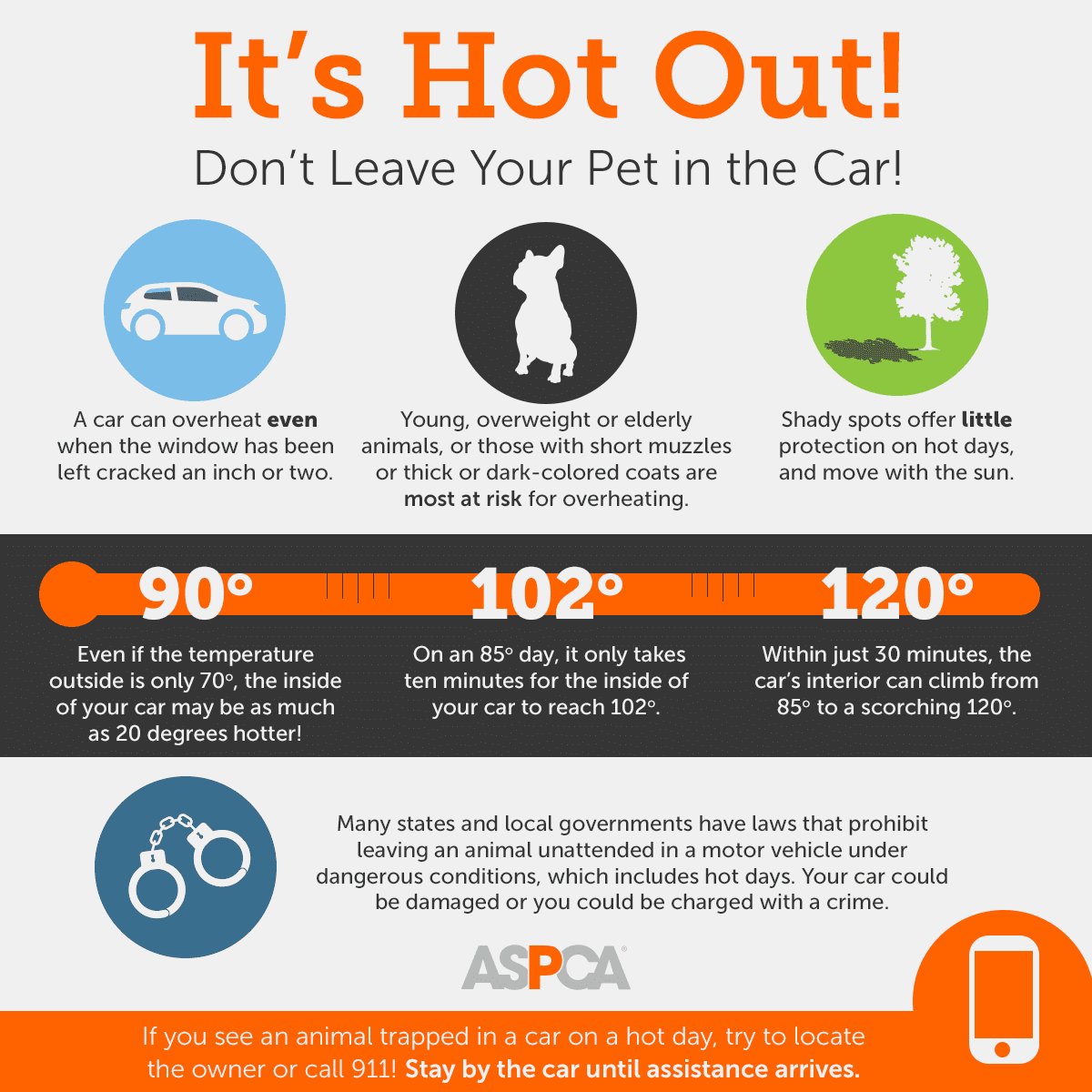
Treating Dogs with Heat Stroke
If your dog experiences any of he following symptoms on a warm or hot day gently wrap a cool (not cold) wet towel around he underarm, belly and groin area then remove (leaving it on can create a sauna effect). Keep them standing or with as much air circulation as possible (which also helps them cool off). Then, get them to a vet immediately. You may also point a fan (not AC) on them and dab them with the wet towel. Avoid cooling too rapidly to avoid shock. Provide access to water but don’t force your dog to drink water.
- Rapid or Excessive Panting
- Rapid or Difficulty Breathing
- Increased Heart and Respiratory Rate
- Abnormal Drooling
- Thickened Saliva
- Mild Weakness
- Stupor or Collapse
- Seizures
- Bloody Diarrhea
- Muscle Tremors
- Staggering
- Vomiting
How Much Water Should My Dog Drink Per Day?
According to the AKC, as a general rule, dogs require at least one ounce of water per day for each pound of body weight. For example, a 50 lb dog should have 50 ounces or, a little over 6 cups of water in a normal day. Puppies and lactating dogs typically drink more than your average adult dog. When you factor in heat, exercise, playtime, etc., your dog will need more water.
Be sure to consult your individual veterinarian for advice to make sure your dog consumes enough fluids on an average day and on a warmer “active” day so you have a range!
Tips to Keep Your Dog Hydrated
- Take a Dog Water Bottle and a Collapsible Dog Water Bowl with you on Hot Days and Carry plenty of drinking water to make sure your dog stays hydrated!
- Have extra water on hand or better yet, plan your walks where you know drinking fountains are available so you can refill as needed!
- Dogs don’t sweat so it’s ok to sprinkle drops of water on them if it feels hot (or let them walk under a cool water faucet)!
- Always have plenty of fresh, clean water available in bowls at home. Also clean your dog’s water bowl daily with soap and hot water to eliminate bacteria.
- Check your dog’s water bowl every few hours
- Try adding a splash of carrot juice, chicken broth or pieces of a favorite fruit to an alternate bowl to learn what your dog like as alternatives. Add ice chips food and water bowls and experiment various ways to hydrate your pup!
- Give your dog fresh organic watermelon treats (under Watermelon and Dogs section on our last post). (Rover has several summer frozen treat recipes for dogs that look deeeeelish)!
Symptoms of Dehydration in Dogs
Since dogs can’t tell us they are thirsty, knowing the signs of dehydration can help dog owners respond quickly and also catch potential serious medical conditions before they become life-and-death emergencies.
According to Dr. Jerry Klein, the AKC’s chief veterinary officer symptoms of canine dehydration include:
- Loss of skin elasticity
- Loss of appetite
- Vomiting with or without diarrhea
- Reduced energy levels and lethargy
- Panting
- Sunken, dry-looking eyes
- Dry nose
- Dry, sticky gums, mouth
- Thick saliva
- Gently pinch a fold of skin at the top of the neck. Is it slow to snap back? (Test this on a normal day for perspective)
Not all signs of dehydration are easy to detect. If you suspect your dog may be dehydrated or if your dog shows signs of any of the above symptoms contact your vet immediately.
Remember, Plan ahead according to the weather, take lots of water on your walks, stay in the shadiest areas and keep your outdoor time short during hot summer days. Always monitor your dog’s breathing, appearance and demeanor to catch any potential heat related issues immediately and go home to a cool area. When it’s wayyyyyy too hot outdoors, practice commands and play dog enrichment games inside!
Have a safe and fun doggy Summer!
